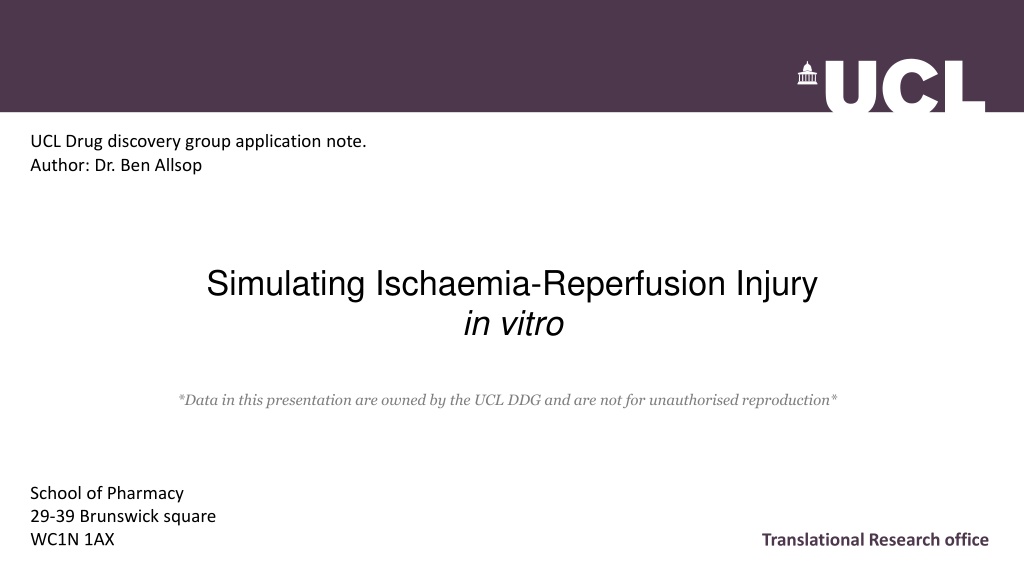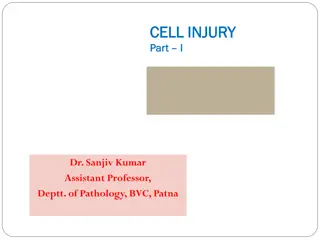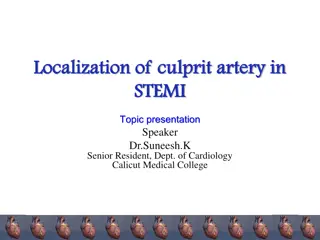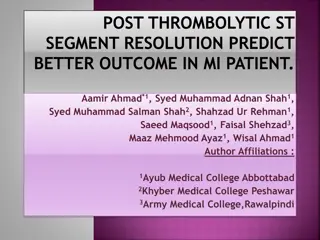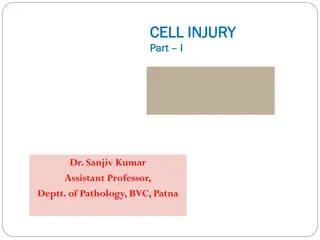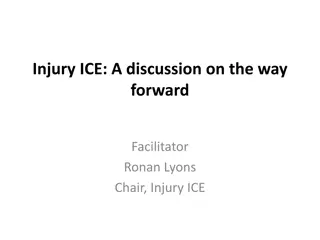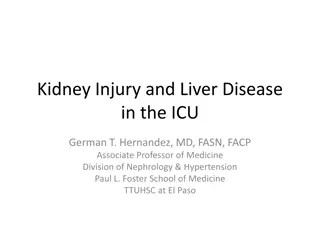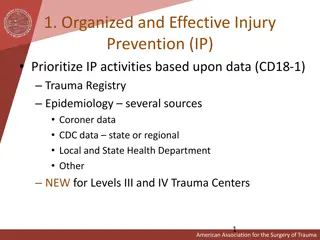Understanding Ischaemia-Reperfusion Injury: Implications in Disease
Ischaemia-reperfusion injury (IRI) is a critical event involving cellular changes due to the disruption and subsequent restoration of blood supply. This process can lead to necrotic and apoptotic cell death, contributing to conditions such as heart attacks, strokes, and cancer. Dr. Ben Allsop's research delves into simulating IRI in vitro to study its mechanisms and potential interventions, utilizing tools like the Clariostar plate reader for monitoring. Insights gained from this work have implications for enhancing understanding and potential treatment strategies for conditions influenced by IRI.
- Ischaemia-reperfusion injury
- Cellular mechanisms
- Disease implications
- Medical research
- In vitro study
Download Presentation

Please find below an Image/Link to download the presentation.
The content on the website is provided AS IS for your information and personal use only. It may not be sold, licensed, or shared on other websites without obtaining consent from the author. Download presentation by click this link. If you encounter any issues during the download, it is possible that the publisher has removed the file from their server.
E N D
Presentation Transcript
UCL Drug discovery group application note. Author: Dr. Ben Allsop Simulating Ischaemia-Reperfusion Injury in vitro *Data in this presentation are owned by the UCL DDG and are not for unauthorised reproduction* School of Pharmacy 29-39 Brunswick square WC1N 1AX Translational Research office
Ischaemia-Reperfusion Injury (IRI) in disease An ischaemic event occurs when occlusion of blood supply to part of an organ causes decreased local O2 and environmental pH. Cells then rely on anaerobic respiration and non-glycolytic metabolism. These environmental changes cause necrotic cell death and localised inflammation1. When the occluded area is reperfused with oxygen / glucose rich blood, the movement back to glycolytic metabolism and oxidative phosphorylation causes the formation of reactive oxygen species and dysregulation of the mitochondria. These factors promote necrotic and apoptotic cell death. IRI contributes to cell loss during heart attacks1, stroke2 and has a role cancer biology3. Fig 1: Schematic highlighting main events of ischaemia-reperfusion injury that occur during heart attack. 1 Kuo & Lang; In Vivo; May-June; 2008; vol. 22 (3) 305-309. 2 - Chouchani et al. Nature 515.7527 (2014): 431. 3 Parkins et al. Cancer Res; 1995; vol. 55 (24) 6026-6029
Inducing Ischaemic injury Monitoring short IRI protocols The Clariostar (BMG Labtech) is plate-reader with an atmospheric regulator that enables the rapid manipulation of atmospheric gases during kinetic plate reads. a) Users can remove O2 to create a hypoxic atmosphere (0.1% O2), hold the chamber under hypoxia, and then ramp back up to environmental O2. CO2 is set to 5% and chamber temperature to 37oCthroughout experiments as standard. Monitoring over 24h b) Changes to atmospheric gases can be performed manually, or programmed to occur at specified timepoints. Multiplexed output protocols can be created and read at predetermined intervals (every 5min, every hour etc.). Fig 2: Recording Clariostar atmospheric O2 (red) during short (Fig. 2a) and long (Fig. 2b) ischaemia-reperfusion protocols. Chamber temperature = 37 oC and CO2 at 5% throughout.
Kinetic monitoring of internal O2 and cell death a) b) Fig 3: Reduction of ischaemia-reperfusion injury with insulin. a) Monitoring of intracellular O2 of H9c2 rat myoblasts subjected to a 1h ischaemia-reperfusion injury protocol. Intracellular O2 shifts within 5min of atmospheric O2 changing. b) Kinetic monitoring of cell death throughout IRI protocol. Little-to-no cell death occurs during 1h hypoxia, then there is a small increase on reperfusion that plateus before increasing ~1.5h post-reperfusion. All data represent the mean SEM. Use of MitoXpress Intra (Agilent) demonstrates that intracellular O2 (%) closely follows changes made to the atmospheric O2 (Fig. 3a). Outputs can be multiplexed to allow kinetic monitoring of both intracellular O2 and cell death using CellTox Green (Promega) (Fig. 3b).
After IRI cells may be tested with endpoint assays Mitochondrial membrane potential (MMP) Reactive oxygen species (ROS) Cell viability Cells are also suitable for fixation and analysis by immunofluorescence or harvesting for western blotting.
For further information please contact: Richard Angell Drug discovery group lead; (r.angell@ucl.ac.uk) Trevor Askwith Senior biologist; (t.askwith@ucl.ac.uk). Ben Allsop Biologist (Author); (b.allsop@ucl.ac.uk).
